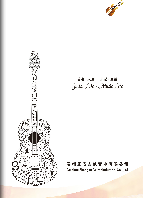How to Use Visualization Techniques for a Successful Performance
2018-04-19 15:55:31

VISUALIZE IMAGES
It’s crucial to visualize images of your upcoming performance. Of course you want to focus on how great it will go, but the only way for those thoughts to be authentic is to first confront your present negative imagination. Once you do, you will weaken your fearful thoughts so you can establish unshakeable positive images in their place. So, start by visualizing your performance in the worst possible light. Focus on all the negative possibilities and use your creativity to imagine how bad it could actually get.
Imagine yourself standing backstage before the performance. You feel nervous, sweaty, rigid, maybe even nauseous. You don’t want to be there and neither does the audience. But, despite your bad feelings, you walk onstage and begin to play. As you execute notes in an uninspired and robotic manner, you suddenly choke and completely forget what to play next. Feeling humiliated, you look up at the audience like a deer in the headlights. But they just stare back in harsh disapproval. This is when you realize that your worst nightmare has become a reality. The audience hates your playing and rejects you. At that point, you fear that there’s no recovering from a mistake like this.
Although this worst-case scenario sometimes feels like a plausible outcome, doesn’t it sound ridiculous to be rejected so harshly? It’s just not going to happen. People will still support you despite your mistakes, even big ones. There’s always hope and a future for your playing. Things can always get better. So now, look on the bright side.
Visualize positive images of the performance. What will you look like when you confidently take the stage? What will the supportive audience look like? Will they be smiling? Will you be smiling? What does your relaxed body look like as you begin to play the first notes? What will your left hand look like as it glides to different parts of the neck? Imagine your capable right hand plucking each new pattern with ease. How loudly will the audience clap? What will your flawless technique look like throughout the entire performance? Imagine yourself and your audience after having been touched by the beauty of the music that naturally flowed through you. The more vivid the images, the better. As you imagine more of these positive pictures, they will drown out the negative ones and eventually become all that you focus on.
VISUALIZE NOTES
Try to visualize the notes that you’ll play in your performance. Can you hear all the notes in your sheet music without touching your guitar? Here’s how you can develop this ear-training skill: Start by setting down your guitar and isolating the first measure or section of a piece in the sheet music. Silently read it to yourself and attempt to hear every single note in your head from memory. When you find notes that you are unable to hear in your head, pick up your guitar and play that section. Then try again to hear each note without your guitar. It’s OK if you have to repeat this process again and again until the notes start sinking in. Once you feel confident with one section, repeat this process for each new section until you’ve gone through the entire piece. Then, challenge yourself to hear all the notes from beginning to end without your instrument. This is a big challenge, so, when you’re unable to hear notes, simply pick up your guitar to remind you.
Finally, once you are able to hear every note in the entire piece, grab your guitar and play it. You’ll find that you now have an internal musical consciousness that gives you a reference for each note. Now if you play a wrong note, the note you hear in your head will tell you whether it should be higher or lower. Hearing the notes in your head sets you up for successful practice and performance because it helps you to play more accurately, memorize more effectively, and play in a more engaged manner. You’ll truly be hearing and feeling each note instead of just playing it with your fingers.
VISUALIZE FEELINGS
Now, imagine how your body will feel physically and emotionally at the performance. In addition, imagine the range of emotions that the music has to offer.
Start by thinking about what your body will physically feel like, how your muscles will feel as they’re relaxed throughout the entire performance. Will the strings feel stiff and hard to move across, or will they be easy to slide across, like butter? How will your body feel as it sways along with the emotions in the music?
Next, visualize your positive emotions during the performance. How confident and proud will you be as you execute difficult techniques with rich emotion? Imagine yourself during the entire performance feeling assured, creative, passionate, grateful, and generous. Don’t allow any negative emotions to creep into the performance. They are out of place, because at that point it’s not about you and your lack of preparation. It is about an emotional connection to the music that you and your audience have the privilege of sharing.
Finally, what is the depth of the emotions in each piece, and when do these emotions change? In your practice, look at the beginning of a piece and imagine the mood. Associate anything you can with the feelings in that passage. It could be images, colors, life experiences, people, places, or other associations. After exploring the qualities and significance of this mood, move on to the next feeling and make new associations. In addition, make note of where in the music the change in emotion happens. By doing this, you’ll better understand how the emotional story of the piece unfolds. This story will then serve as the road map for your performance.
IT’S GOING TO BE A SUCCESS!
Clear direction is necessary in order to achieve anything in life. So, as you prepare for your next performance, set yourself up for success by visualizing your playing in terms of images, notes, and feelings. And as you imagine how awesome your performance will be, I bet you won’t be able to help but smile about it!









